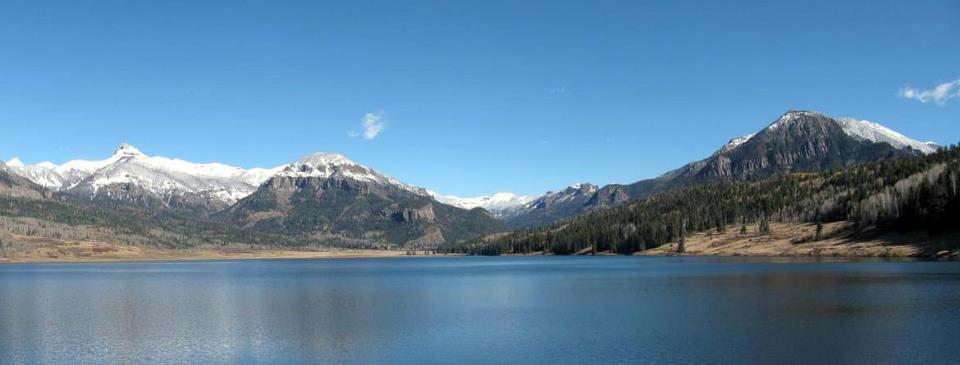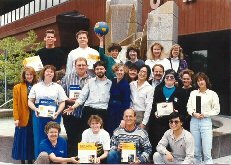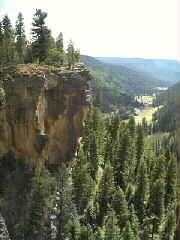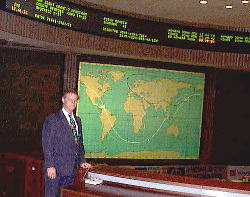
Colorado Dreamin'...
Biographical notes
Not entirely up-to-date, but hey! This is a work in progress...

In my professional life, I am deeply involved in the development of Galexi Wordcraft, LLC, a company devoted to helping its clients communicate with the world.
Up until late 2000, I worked as a vice president at TechTrans International, Inc., the company that provides Russian language and logistics services to NASA's Johnson Space Center in Houston, Texas. The company provided the language support for the Shuttle–Mir program (referred to as "Phase 1" by the cognoscenti), and continues today to support the program that's assembling the International Space Station.
The work was challenging, the team I worked with was (and continues to be) awesome, and the program the company supports is currently this planet's only serious effort to put humankind in space.
It's been quite a road getting here. I was educated in the New York City school system, graduating from SUNY at Stony Brook with degrees in engineering and Russian. (The strange combination is based on my needing 6 credits of humanities to get my engineering degree, and ... well ... I got carried away, okay?)
After graduation, I worked briefly as a stage and close-up magician, then as a freelance tour escort for just over two years in the USSR. After meeting and marrying my wife in Moscow, I finally settled down, landing a position as an editor for a New York publisher of English translations of Russian scientific journals.
Eventually, I got an opportunity to move to Florida, to resume—start, actually— my career in engineering. I started out as a junior mechanical engineer, moved over to the "advanced energy" division (largely on the basis of my ability to write), and eventually became a control systems engineer (largely on the basis of my facility with computers). In 1984, I picked up a professional engineering license as an electrical engineer. In 1988, I went to work as a "knowledge engineer," building expert systems at a small AI start-up.
In my spare time, the call of the free lance was strong, and I translated scientific articles from Russian to English for Plenum and wrote articles for computer magazines, including BYTE and Dr. Dobb's Journal.

In 1990, I was hired to write for and later, do product management at Borland International in California. The photo to the right was taken soon after I started to work at Borland and shows most of the gang that made up Borland's Languages Business unit (I'm second from the left in the top row). I understand that, of the people in the photo, only two of the original gang remain, though the company is now called Inprise.
At any rate, in 1990, Borland was embarking on a path to introduce "objects" into its mainstream programming languages, Pascal and C (soon to be C++), so I set aside my knowledge of BASIC, FORTRAN, Lisp, assembler, Smalltalk, and Prolog that I'd picked up in my engineering work and became an evangelist for the Next Great Thing: object-oriented programming.
Nearly three years and a management education later, I was one of the 15% cut in Borland's 'Black Thursday' layoff in December 1992. For the first time in my life, I couldn't justify not quitting my job to go work for myself because, well, I had no job. So, despite a promising interview with a large software company headquartered in Redmond, Washington (wink), I was hearing that free lance call again, this time irresistably.

A serendipitous visit to Colorado helped me establish a new base of operations to become a full-time freelance translator, writer, and consultant.
I was located in one of the prettiest spots around, nestled in the San Juan mountains just down the road from natural hot springs and within eyeshot of the Continental Divide. The photo to the left is a view from the top of a cliff a few hundred feet above the Piedra River, and much as I'd like to brag that I took the picture from my kitchen window, I didn't. On the other hand, the view from the kitchen window, especially in the morning as the morning sun starts to glance off of Piedra Peak, never fails to bring a smile to my face, either!
Yes, sir-ree. I was living the good life, in the clean, crisp mountain air, and doing what I loved. Then, three years later, in late 1995, I was offered a chance to move to Houston and work with the space program. As an incurable romantic, I viewed this as an opportunity to help humankind take its first baby steps to the stars, so how could I refuse?
The Houston years were good to me. I got to work with an incredible assortment of intelligent, competent people. I learned a tremendous amount of terminology and became familiar with many different kinds of equipment, experiments, simulators, and facilities. In 1997, I fulfilled the requirements to become one of a handful of people certified to interpret in the flight control room (FCR) at the Mission Control Center.

There were also opportunities to travel. The photo to the right was taken in September 1998 in Russia and, though it seems I'm standing at the front of a rather dark room with a wall map just behind me and to my left, I'm actually standing on the balcony of the Mission Control Center in Moscow. To my left and below me are the control consoles of the flight control team that kept the Mir in orbit for over 15 years until forced to bring the station down in a controlled reentry over the Pacific Ocean in March 2001. (Click on the photo to see the view from the balcony)
While I got to work with a lot of super people in Houston, and together, we achieved a lot of important goals, after five years, I decided it was time to take my leave, and though I now still go down to Houston from time to time to work on specific space-related assignments as a contractor, I also get to spend more time in Colorado with my family.